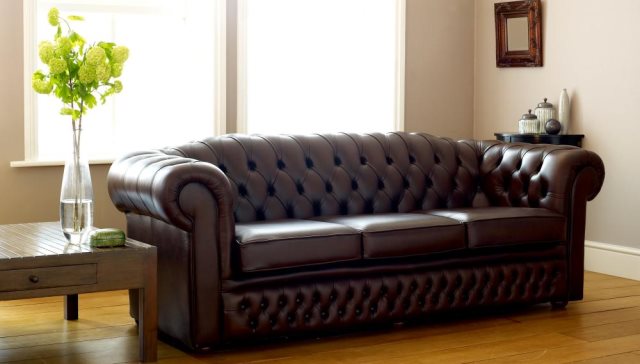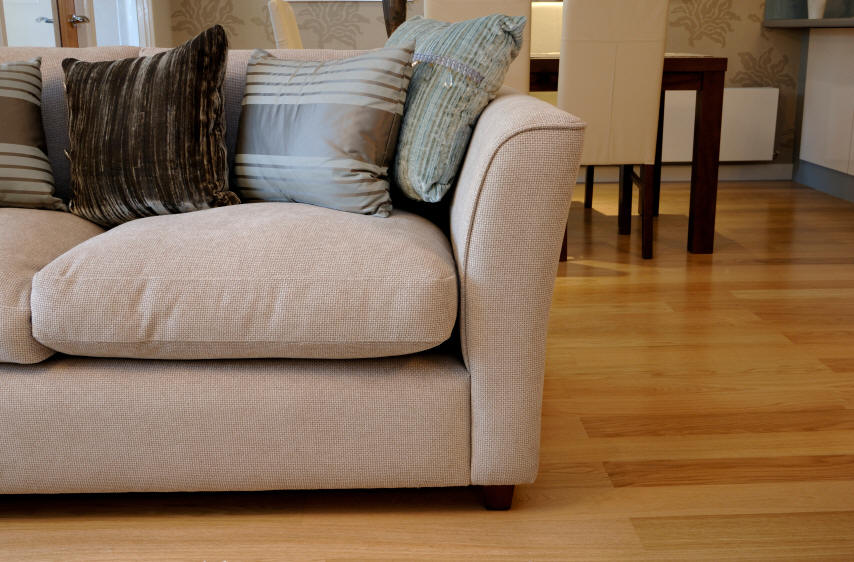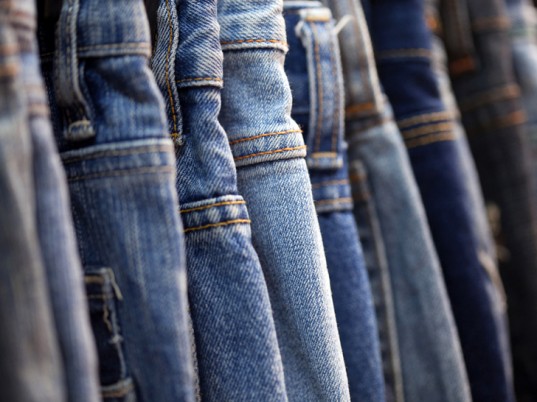
Leather sofa sets have become a staple furnishing in many homes today; they are both beautiful and make a statement. Leather seats may be a focal point of the living room but they do require specific methods of care, even more so than ordinary fabric covered furniture. In order to keep your seats and prolong their life span keep reading.
The different Types of Leather:
There are a number of different types of leather used by manufacturers to create the sofa sets; they are created using various processes that result in distinct textures and qualities. It is important for any home owner to understand their furniture before purchase, so your first step is to know about the type of leather you purchased. There are three broad varieties of leathers available on the market:
• Aniline Leather
Aniline is top-grain, natural leather that is softened with oil, producing a buttery feel. It is arguably the most luxurious kind of leather, and it is also the most expensive. However, because it is not treated with any type of protective coating, it is not the most durable. Not only does it scar and mark easily, it fades very quickly as well. Even indirect light can change its color significantly. The best test to check the durability of leather is to run a fingernail gently on the surface; if it leaves a track, it is probably not suitable for rooms that are accessible to children and pets. In addition, aniline leather should only be cleaned by a professional.
• Semi-Aniline Leather
Semi-aniline leather is similar to aniline in look and feel, but it is coated with a thin layer of protective pigment, giving it some durability. However, even with the protection, semi-aniline leather still marks easily if care is not taken. As the protective layer is quite thin, it is also liable to stain easily. It is possible to clean this kind of leather at home but with care, it is however also important to use a leather conditioner once every few weeks.
• Corrected-Grain Leather
Corrected-grain leather is made from hides that originally contained lots of imperfections, such as bite marks and scars. To correct these imperfections, an imitation leather grain is embossed on the surface. It is then coated with a thick protective pigment, which hides the imperfections further and gives the leather the durability it needs. This kind of leather is best suited for rooms that have lots of traffic in terms of children and pets. The advantage of corrected grain leather is that it is easy to clean, as the protective layer is quite thick, making the leather less susceptible to water damage.
Tips to follow when cleaning your sofa:
- Dust the sofa: When it comes to leather, the less-is-more approach, even when dusting or wiping down the sofa you should pay attention to the spots that need most cleaning such as places with grimy spots and debris. When wiping down the sofa ensure to use a damp, not wet cloth because that is all it really needs
- Materials to be used: When it comes to leather you have to be careful what detergents you use, it is best to use a mild, all natural soap that does not contain harsh chemicals such as sodium laurel sulfate as such chemicals dry out the leather. Whenever you want to clean the sofa, always do a spot test on a part of the sofa hidden from view; a small part that will show how the leather will react to the detergent.
- Special care: If there is any mold or mildew lightly spray the spot with a mild solution of vinegar and water (The vinegar is a mild disinfectant and should kill any mold), make sure to wipe quickly and use as little liquid as possible to avoid. Also, if possible, buy a leather cleaner as non- leather focused products can strip away the leather’s natural oils causing it to dry out and crack over time. Look for a good saddle soap or natural leather cleaner that contains natural beeswax and not too many petroleum products or solvents, a wax based cleaner would work best. Remember that leather is a natural material, and every piece is a little bit different. You may have to try several different cleaners before finding one that works for your particular sofa.
- Extra tips and cleaning: Always spot test the cleaner, clean a small spot first and ensure that after wiping down the sofa ensure that the leather has dried fully and that no stains or discolorations are left behind before using the product on the entire sofa. Please note that many leather cleaners contain solvents that can discolor the leather. Apply the cleaning product with a slightly damp cloth. Dip the damp cloth into the cleaning product. Applying medium pressure, rub the surface of the leather with a circular motion.
- Techniques: When cleaning, start with areas least dirty then work your way to dirtier areas as this will keep the dirt from spreading. Change the cloth often and wipe excess cleaner from the sofa, with a clean, damp cloth, wipe each cushion again, rinsing the cloth in clean water after each pass over a cushion.
- Troubling bits: Some stains can be stubborn and you can use a heavy duty leather cleaner that is mildly abrasive. If the stain does not come out easily, donʼt keep scrubbing it, as this may damage the leather.
- The big finish: Dry the sofa and pass the dry cloth over the cushions, then ventilate the area to make sure it dries fast, condition the leather and buff with a clean cloth and you are good to go.
Things to Avoid:
- Excessive Heat: Heat can cause leather to dry out and crack. If possible, make sure sofas are not extremely close to a heat source such as a radiator or a fireplace. Body heat can also cause damage. Avoid sitting on the same seat all the time.
- Spillage: Take care when drinking on or near the sofa. Even though most leather sofas have a protective layer, spilled liquids may result in discoloration. Gently blot spills with a cloth or paper towel. Do rub, as this may set the stain.
- Excessive Light: If there is no one at home during the day, it might be a good idea to keep the curtains closed, as sunlight will fade leather.
- Abrasive Materials: Avoid using abrasive materials to clean the sofa. Even baby wipes are alkaline based and might damage the protective pigment of the sofa. Bleach or ammonia-based cleaners also cannot be used. In addition, any cleaning material made of wax or silicone should also be avoided, as they may leave residue.
- Stain Removal: Removing stains from leather can be tricky, as the wrong technique, or an abrasive material, can destroy the protective coating. Even though there are a number of commercial stain removers, it is best to follow the instructions that came with the sofa or contact the manufacturer before trying a product. Also be wary of trying household remedies such as hair spray and bleach; these may be successful in getting rid of the stain but will permanently damage the protective layer of the sofa.







